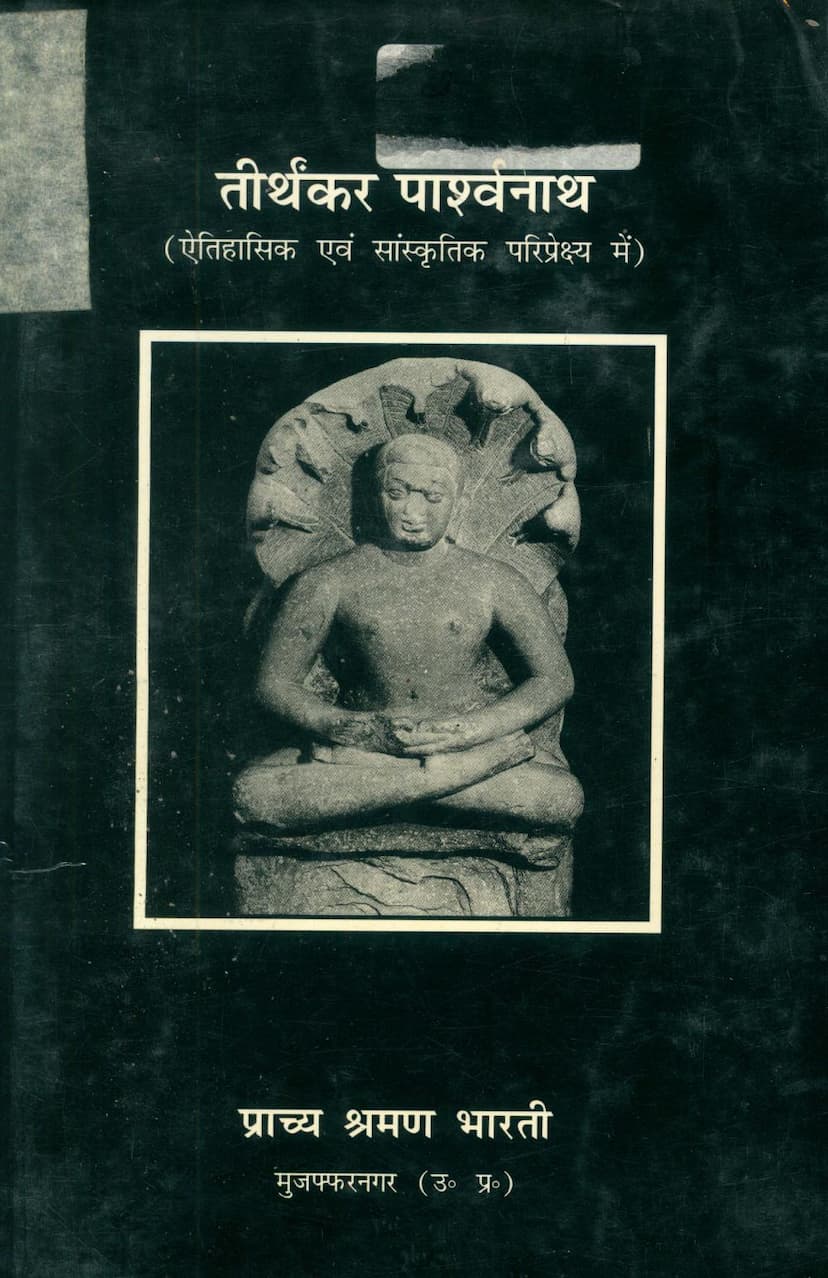Tirthankar Parshwanath
Added to library: September 2, 2025

Summary
Here's a comprehensive summary of the Jain text "Tirthankar Parshwanath (in historical and cultural perspective)":
This book, published by Prachya Shraman Bharti, Muzaffarnagar, is a collection of scholarly articles presented at a national seminar on "Tirthankar Parshwanath: Historical and Cultural Perspective." The seminar was organized by Shri Ganeshvarani Digambar Jain Sansthan, Varanasi, from October 19th to 21st, 1997, at Shri Jamboo Swami Digambar Jain Siddhakhetra, Mathura. The publication is dedicated to the eleventh deeksha anniversary of Param Pujya Upadhyay Shri Gyansagar Ji Maharaj.
Key Themes and Content:
The book explores various facets of Lord Parshvanatha's life, teachings, and influence from historical, cultural, and religious perspectives. It aims to provide a comprehensive understanding of this pivotal Jain Tirthankara, who is considered historically verifiable and has a significant legacy in Indian religious and cultural history.
Major Sections and Topics Covered:
-
Introduction and Background:
- The book begins with introductory remarks from the publishers and editors, highlighting the importance of Tirthankara Parshvanatha and the objective of the seminar to bring together scholarly perspectives on his life and legacy.
- It emphasizes the need to understand Parshvanatha not just as a religious figure but also as a historical and cultural influencer.
-
Historical Context and Parshvanatha's Life:
- Historicity: Several articles delve into establishing the historical existence of Parshvanatha, referencing his pre-Mahavira lineage and his influence on contemporary religious movements, including Buddhism. Scholars like Hermann Jacobi are cited for their work in this area, using both Jain and Buddhist scriptures to solidify his historicity.
- Birth and Early Life: Details about his birth in Varanasi, his parents (King Ashvasena and Queen Vamadevi/Varmala), his Ugra lineage, and the significance of his name "Parshva" (related to a snake seen by his mother) are discussed.
- Teachings (Chaturyama Dharma): A significant focus is placed on the four cardinal vows (yama) taught by Parshvanatha: Ahimsa (non-violence), Satya (truthfulness), Asteya (non-stealing), and Aparigraha (non-possession). The relationship between these vows and Mahavira's Panchamahavratas (including Brahmacharya) is explored, suggesting that Mahavira might have expanded upon Parshvanatha's teachings to suit a different era.
- Renunciation and Enlightenment: The age at which Parshvanatha renounced worldly life (30 years) and attained Kevala Jnana (omniscience) are discussed.
- Key Life Events: The narrative includes prominent events from Parshvanatha's life, such as the incident with the burning log and the snakes (which led to the rebirth of Dharanendra and Padmavati), and the prolonged penance and the severe 'upasargas' (afflictions) caused by Kamatha (in his celestial form as Shambara or Megha-malin). The role of Dharanendra and Padmavati in protecting Parshvanatha during these afflictions is highlighted.
-
Cultural and Artistic Impact:
- Naga-Cult and Parshvanatha: The prominent association of Parshvanatha with the serpent (Naga) motif, particularly the seven-hooded serpent canopy, is extensively analyzed. This connection is explored in relation to the prevalent Naga worship in ancient India and its integration into Jain iconography.
- Iconography and Sculptures: Various scholars discuss the evolution of Parshvanatha's sculptures across different regions and periods in India (Mathura, Gujarat, Rajasthan, Madhya Pradesh, Maharashtra, etc.). They examine the characteristic features, such as the snake-hood canopy, the figures of Dharanendra and Padmavati, and the depictions of the 'upasarga' (affliction) episodes in art. The variations in iconography and their possible interpretations are also presented.
- Influence on Other Traditions: The book touches upon the possible influence of Parshvanatha's teachings, particularly Ahimsa and the Chaturyama, on contemporary traditions like Buddhism (Gautama Buddha) and the Upanishadic thought.
- Jain Literature: Articles analyze Parshvanatha's portrayal in various Jain literary traditions, including Prakrit texts (like Tiloyapannatti), Sanskrit epics (like Mahapurana, Uttara Purana, Parsvabhyudaya), Apabhramsha poetry, and later vernacular literatures (Marathi, Hindi). The differences and similarities in these narratives are highlighted.
- Worship and Popularity: The widespread popularity of Parshvanatha's worship is evident from the sheer volume of temples and images dedicated to him across India. His role as a 'vighnaharta' (remover of obstacles) and 'chintamani' (wish-fulfilling jewel) is discussed as a reason for his enduring appeal. The influence of the worship of his associated deities, particularly Padmavati, is also noted.
-
Scholarly Contributions:
- The book features contributions from numerous scholars from various parts of India, bringing diverse perspectives and in-depth research.
- The articles often engage with comparative studies, contrasting Jain traditions with Vedic and Buddhist philosophies, and analyzing the development of Jain art and literature over centuries.
- The seminar and the subsequent publication aim to correct historical misconceptions and promote a deeper, evidence-based understanding of Jainism's rich heritage, with a particular focus on the historical and cultural significance of Tirthankara Parshvanatha.
In essence, "Tirthankar Parshwanath (in historical and cultural perspective)" serves as a valuable resource for understanding the multifaceted legacy of this important Tirthankara, highlighting his historical grounding, the philosophical depth of his teachings, and his profound and lasting impact on Indian art, literature, and religious practices. It underscores the importance of scholarly research in preserving and propagating the true understanding of Jain heritage.